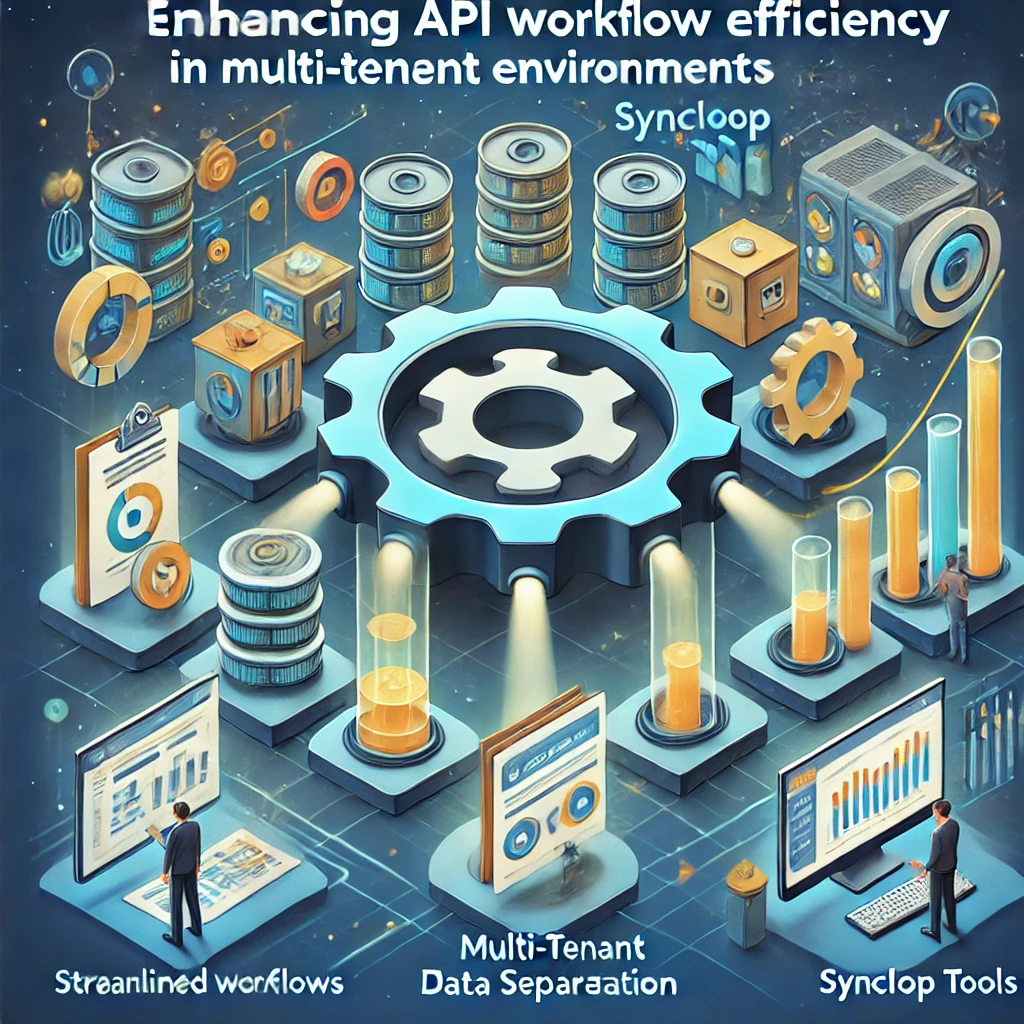Enhancing API Workflow Efficiency in Multi-Tenant Environments with Syncloop

Syncloop provides a robust platform to enhance API workflow efficiency in multi-tenant setups, enabling seamless integration, real-time monitoring, and workflow automation. This blog explores how Syncloop supports multi-tenant API workflows and offers best practices for maximizing efficiency.
The Role of Efficient Workflows in Multi-Tenant Environments
Efficient API workflows are critical in multi-tenant architectures to:
- Optimize Resource Utilization: Share infrastructure resources across tenants without performance degradation.
- Ensure Scalability: Handle increasing numbers of tenants and API requests seamlessly.
- Enhance User Experience: Provide consistent and responsive services for all tenants.
- Maintain Data Isolation: Prevent data leakage and ensure secure access for each tenant.
- Streamline Customization: Support tenant-specific configurations and workflows.
Challenges in Managing Multi-Tenant API Workflows
- Resource Contention High traffic from multiple tenants can lead to resource bottlenecks.
- Data Isolation Ensuring secure access and processing of tenant-specific data.
- Scalability Adapting to the growing number of tenants and fluctuating workloads.
- Complex Workflow Customization Managing workflows tailored to specific tenant requirements.
- Monitoring and Debugging Tracking performance and resolving issues across multiple tenants.
How Syncloop Enhances Multi-Tenant API Workflows
Syncloop offers tools and features tailored to the complexities of multi-tenant environments:
- Dynamic Workflow Automation Automate API workflows with tenant-specific customizations.
- Role-Based Access Control (RBAC) Ensure secure API access with fine-grained permissions for each tenant.
- Data Isolation and Security Enforce data segregation policies to protect tenant data.
- Scalable Infrastructure Automatically scale workflows to handle traffic from growing tenant bases.
- Real-Time Monitoring and Analytics Gain insights into API performance and usage metrics for each tenant.
- Custom Alerts Set up alerts for anomalies or performance issues specific to individual tenants.
- Error Recovery and Retry Mechanisms Ensure workflow resilience with automated retries for failed operations.
Steps to Optimize Multi-Tenant API Workflows with Syncloop
Step 1: Identify Tenant Requirements
Define the specific needs of each tenant, such as:
- Custom data access policies.
- Unique API workflows or configurations.
- Traffic patterns and expected workloads.
Step 2: Configure Tenant-Specific Workflows
Leverage Syncloop’s workflow automation tools to define workflows tailored to each tenant’s requirements. Examples include:
- Data filtering and transformation rules.
- Conditional routing based on tenant identifiers.
- Role-specific access and permission configurations.
Step 3: Implement Data Isolation
Use Syncloop’s data mapping and security features to enforce strict data isolation policies. Ensure:
- Separate data storage or tagging for each tenant.
- Encryption of sensitive tenant data at rest and in transit.
Step 4: Monitor Tenant Performance
Enable real-time monitoring to track API usage and performance for individual tenants. Focus on metrics such as:
- Response times and latency.
- Request volumes by tenant.
- Error rates for tenant-specific workflows.
Step 5: Automate Scaling
Configure Syncloop to scale API workflows dynamically based on tenant traffic. Use auto-scaling rules to:
- Allocate resources during peak usage.
- Reduce costs during low-demand periods.
Step 6: Test and Validate Workflows
Simulate tenant-specific scenarios using Syncloop’s testing environment. Validate:
- Workflow performance under different traffic conditions.
- Data isolation and security measures.
- Resilience to failures or errors.
Step 7: Continuously Optimize
Analyze monitoring data to identify bottlenecks or inefficiencies. Use Syncloop to implement incremental improvements in workflows.
Best Practices for Multi-Tenant API Workflows
- Design for Scalability Use scalable architectures and automated scaling to handle tenant growth seamlessly.
- Enforce Security Policies Implement RBAC and data encryption to protect tenant data and access.
- Adopt Modular Workflows Build reusable workflow components to simplify customization for new tenants.
- Monitor Continuously Use Syncloop’s real-time dashboards to track performance and resolve issues proactively.
- Document Tenant Configurations Maintain comprehensive documentation of tenant-specific workflows and settings.
Example Use Case: SaaS CRM Platform
A SaaS CRM platform uses Syncloop to manage multi-tenant API workflows:
- Dynamic Workflows: Automate lead management and reporting workflows tailored to each tenant’s business processes.
- Data Isolation: Enforce strict data segregation to protect sensitive customer information.
- Real-Time Monitoring: Track API performance for high-demand tenants to ensure consistent service levels.
- Scalable Architecture: Automatically scale workflows during peak traffic, such as sales events or marketing campaigns.
- Error Recovery: Retry failed API requests and alert tenants of issues proactively.
Benefits of Using Syncloop for Multi-Tenant API Workflows
- Improved Efficiency: Streamline workflows and reduce overhead in managing multiple tenants.
- Enhanced Security: Protect tenant data with advanced security measures.
- Greater Scalability: Handle increasing numbers of tenants and traffic with ease.
- Customizable Solutions: Tailor workflows to meet the unique needs of each tenant.
- Proactive Insights: Gain actionable insights into workflow performance and usage.
The Future of Multi-Tenant API Management
As SaaS platforms continue to expand, efficient management of multi-tenant API workflows will become a critical differentiator. Syncloop provides the tools and automation capabilities needed to deliver scalable, secure, and customizable solutions for multi-tenant environments, empowering businesses to stay ahead in a competitive market.
Image Description
A conceptual illustration of multi-tenant API workflows managed with Syncloop, highlighting dynamic workflows, data isolation, and real-time monitoring. The image emphasizes scalability and customization for tenant-specific needs.
Back to Blogs